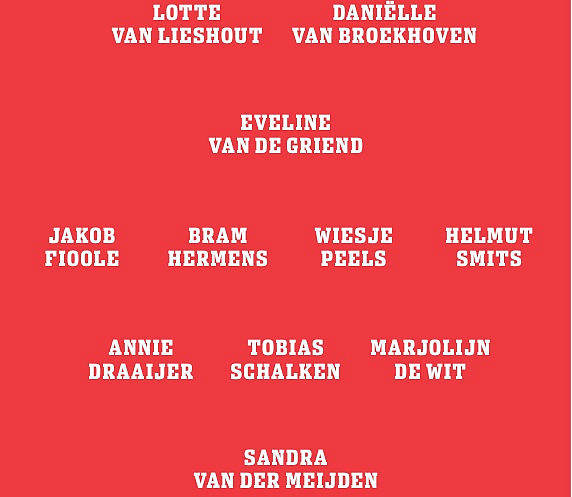Brabant Now
recent work by 11 young artists
12 January - 13 April 2008
To celebrate the twenty-fifth anniversary of the NBKS (North Brabant Art Foundation) De Pont has organized an exhibition of work by a new generation of artists from Brabant. The exhibition has been compiled by Alex de Vries, former director of the art academy in ’s-Hertogenbosch (from 1997-2001) and moderator of De Pont’s conversations with artists, held in collaboration with the NBKS since 2004. In this text Alex de Vries comments on the art situation in Brabant and on his choice of eleven artists, each of whom will be given the use of a ‘wool-storage room’ for the display of work.
The artists in this exhibition belong to the generation born roughly between 1970 and 1980. All of them make extensive use of the rich infrastructure that characterizes Brabant’s art scene. With its two academies for visual art and design, a teacher-training program and a design academy, Brabant has the greatest density of art schools in the Netherlands. The level of museums in Brabant’s major cities sets a high standard of quality for work by visual artists, but smaller cities such as Helmond and Oss also have museums with challenging exhibition policies. Furthermore, there are a striking number of artists’ initiatives in Brabant. Some of them, including Artis in ’s-Hertogenbosch and Lokaal 01 in Breda, hold presentations that clearly go beyond regional interest. Time and again, artists find common ground in (temporary) studio complexes, such as TAC in Eindhoven and KOP in Breda. There joint activities are set up as a means of determining their own stances. In order to develop projects, artists often apply for work periods in various workshops, among them Daglicht and Beeldenstorm in Eindhoven and the European Ceramic Work Centre in ’s-Hertogenbosch. Many magazines and books are published independently; lectures and debates are held. Most artists have little urge to leave Brabant. There is hardly any reason to do so, since their own surroundings adequately enable them to establish a position in the world.
Art from Brabant is rooted in a strong tradition and has now become more lively than ever. And the artists shown in Brabant Now are proof of this. Strikingly, they need no new media but demonstrate that the drawing, the painting, the photograph, the sculpture and the object hold at least as much potential as advanced technological feats or digital means of communication. Bram Hermens (1979) uses the most direct artistic means of expression that exists: the drawing. He usually produces monumental works – such as his wall drawings being shown at De Pont – in which current events are portrayed in an eclectic blend of stylistic elements from the Hellenistic period, the High Renaissance and the Baroque. This is an artist who knows where he comes from and what he wants to do with that.
Obviously, an artist controls the image. These eleven do so in a manual sense as well. Even the two photographers in the exhibition, Annie Draaijer (1972) and Wiesje Peels (1975), have opted to work with analogue cameras. At the same time, they don’t hesitate to employ the latest technology for their large-scale prints. Anachronism and regression play no role here. The way in which Jakob Fioole (1978) maps out the manifestations and developments of city life in paintings and drawings is thoroughly contemporary. And the enigmatic paintings of Lotte van Lieshout (1978), which depict a mythical world, are clearly derived from the madness of today’s world.
In that manual way of working, the artists haven’t avoided experimentation. Sandra van der Meijden (1981) selects uncommon materials (e.g. utilitarian cloth as an image support) for her paintings and makes use of unconventional painter’s tools. The artists take on the confrontation with the world surrounding them. Their work is not so much painted from observation, but based on experience. Traditionally, painters in Brabant have found the landscape to be a rich source of inspiration, as can be seen with the work of Daniëlle van Broekhoven (1975) as well. Whereas Marjolijn de Wit (1979) paints a world in which the facts of life come crashing in, Tobias Schalken (1972) opts for a different strategy as sculptor. His large works are dream-like visions of amazement and repulsion.
From the places in which they live and work, these artists seek their own stances in the art world and their own relationships to society. Personal experiences are sublimated and sometimes put into perspective. Eveline van de Griend (1976) has had an ambivalent attitude toward outward appearances since her youth in Nigeria. What lies hidden beneath the beauty of her sculpted heads is more than meets the eye.
The younger generation of artists from Brabant shows that any cliché image can be brushed aside. Take Helmut Smits (1974) for instance. His alternative for the known is both rigorous and far-reaching in its consequences: he shows us the unknown. Everything we know can take a different shape. And the same applies to the art from Brabant.
